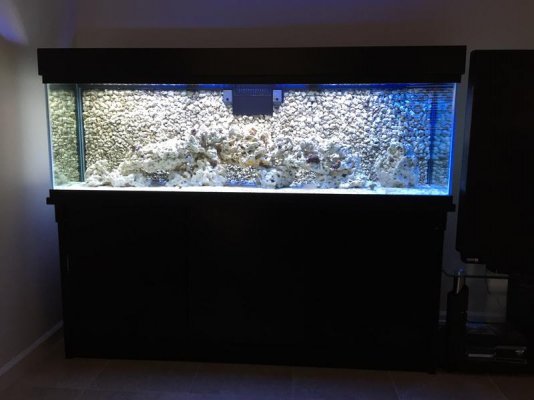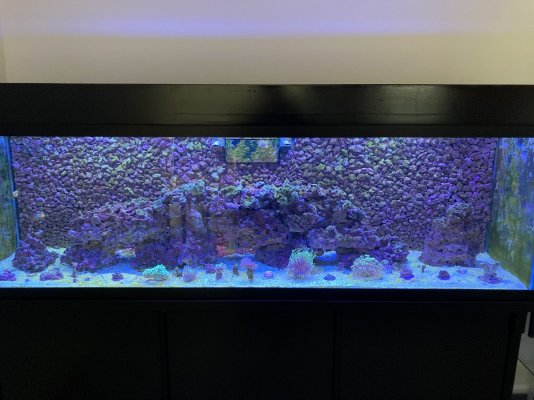Daniel@R2R
Living the Reef Life
View Badges
Staff member
Super Moderator
Reef Squad
Partner Member 2024
Excellence Award
Photo of the Month
Article Contributor
Hospitality Award
Article Administrator
Reef Pumpkin Carver
R2R Secret Santa 2023
My Tank Thread
OK, I realize I'm likely to get at least 1,000,001 opinions on this, but I'll give some context to the question.
I'm looking to upgrade a 50g tank to a 200+g tank. I'm also looking at starting a small office tank. I've only got the rock that is currently live from the previously set up 50g reef. It's been active for the last 6 years, so there's plenty of good stuff in it.
So, since I'm planning to use mostly dry rock in the big reef and add the previously used live rock to it, I'm wondering if there's a magic ratio that will kick things off well. I'm also considering taking a little of that live rock and adding it to the scape in the smaller office nano to kick that one off to.
I do realize that it's probably a "the more, the better" kinda scenario, but I'm wondering if there's a tipping point (I'm kinda assuming there is). Like what's the minimum to get good results, and then where do diminishing returns start to set in? So I guess I'm looking for a ratio window of sorts...
Does this make sense? If the above is confusing, just ask questions and I'll try to clarify what I'm saying. LOL
Thanks for the help, guys! Excited to have this discussion.
I'm looking to upgrade a 50g tank to a 200+g tank. I'm also looking at starting a small office tank. I've only got the rock that is currently live from the previously set up 50g reef. It's been active for the last 6 years, so there's plenty of good stuff in it.
So, since I'm planning to use mostly dry rock in the big reef and add the previously used live rock to it, I'm wondering if there's a magic ratio that will kick things off well. I'm also considering taking a little of that live rock and adding it to the scape in the smaller office nano to kick that one off to.
I do realize that it's probably a "the more, the better" kinda scenario, but I'm wondering if there's a tipping point (I'm kinda assuming there is). Like what's the minimum to get good results, and then where do diminishing returns start to set in? So I guess I'm looking for a ratio window of sorts...
Does this make sense? If the above is confusing, just ask questions and I'll try to clarify what I'm saying. LOL
Thanks for the help, guys! Excited to have this discussion.


















